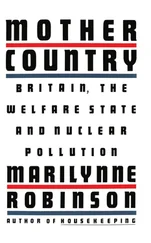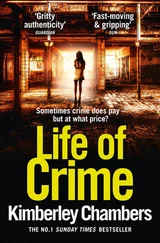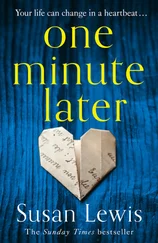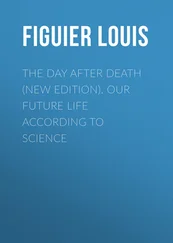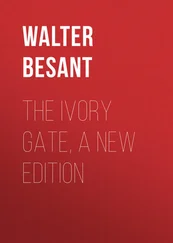It remained, however, a Britain where many newly-wed couples still lived with their parents for lack of any other home; where tenement slums still existed, terraced houses could still shelter several families sharing a gas ring and a single lavatory, and where families would still find they would have to wait nine or ten years for a council house. More than 40 per cent of households did not have a fixed bath and 15 per cent had to share a lavatory, 32television sets were a treasured rarity, pianos were still valued, and virtually every home had a Bakelite or wood cabinet mains radio.
In the Britain of 1951, Neil Kinnock, an eight-year-old in the Welsh valleys, was about to benefit not just from attending a grammar school but from the further education that in the 1980s would allow him to declare, in one of the few moments in that decade which caught the resonance of the post-war achievement, that he was ‘the first Kinnock in a thousand generations’ to go to university. John Major was a nine-year-old in Worcester Park, about to follow the same path to grammar school, though not to university. Tony Blair, whose education would take in the Scottish public school Fettes and Oxford University, was not even born. Hilda Margaret Roberts was of an earlier generation, the one before the welfare state. A scholarship girl at the grant-aided grammar school in Kesteven in 1936, her alderman and grocer father had been able to find the funds that let her take up a place at Oxford in 1943. As the Conservatives took office in 1951, she was already twenty-five, a losing candidate at Dartford in both 1950 and 1951. But she was on her way.
PART III
CONSOLIDATION
1951–74
CHAPTER 11
‘You’ve never had it so good’: Conservatives
1951–64
Wealth and welfare are partners. They both rose under Attlee’s socialism, Macmillan’s opportunity society and Butskell’s consensus.
A. H. Halsey, ‘A Sociologist’s View of Thatcherism’ in Skidelsky, ed., Thatcherism, p. 186
The memory of massive unemployment began to haunt me then and for many years to come.
Harold Macmillan, recalling Stockton in the 1920s, quoted in Horne, p. 71
Let’s be frank about it, most of our people have never had it so good.
Macmillan at party rally in Bedford, 1957
FROM 1948 TO 1973 Britain enjoyed a sustained period of economic growth, averaging around 2.8 per cent a year. With growth the welfare state expanded, and at times expanded rapidly. More could be afforded, more could be and was done.
There were of course economic ups and downs, some much sharper than others. The two and a half decades saw the arrival of ‘stop-go’ – or perhaps more accurately ‘go-stop’, in which economic stimulus led to overheating in the form of inflation or big balance of payments deficits, to be followed by contraction and then expansion again. But it was not until the early 1970s that the bedrock of the welfare state, full employment, first cracked. Even then the fissure was relatively small: in 1971–2, when for the first time unemployment averaged more than 3 per cent over the year, it did so by only the finest of margins. Such figures were to be low by the standards of the 1980s and 1990s, but what now seem minor shifts in the jobless total stimulated intense controversy; and there was continuing concern at levels of structural unemployment in some parts of Britain that were often double the national average.
None the less, after the initial, painful hiccup over rearmament during the Korean War, the late fifties and early sixties became dubbed the age of affluence. In the mid-1950s, Conservative economic policy was dubbed by the Economist ‘Butskellism’, 1combining the names of the present and previous Chancellors, Butler and Gaitskell. Neither liked the label. Butler was to cavil in his autobiography that ‘both of us spoke the language of Keynesianism. But we spoke it with different accents and with a differing emphasis.’ 2After 1955 the cross-party conflict over the handling of the economy sharpened noticeably. None the less, the phrase did capture what in retrospect looks like a broad economic consensus.
This did not mean that there was a consensus on spending on the welfare state. Housing was put top of the Conservatives’ list of priorities and everything else – hospitals, health centres, schools, books – languished for some years a long way behind, a fact made much of by Labour. But there was still perpetual alarm within the government at the apparently inexorable growth in social spending. Repeated attempts at retrenchment in health, social security and education were made by successive Chancellors and the Treasury, but these met with only the most limited of success and were to culminate with the resignation of Peter Thorneycroft as Chancellor of the Exchequer in January 1958. A proto-monetarist faced with inflation and a sterling crisis, Thorneycroft had proposed curbing the money supply and freezing public spending through a package of measures with options including ending the family allowance for the second child, reducing the NHS ophthalmic service, increasing the NHS element in the national insurance contribution, introducing a ‘boarding fee’ or hotel charge in hospitals, and raising the price of school milk. After three Cabinet meetings Macmillan summed up strongly against him, arguing that the family allowance proposal was ‘contrary to the traditions of the Conservative Party’ and that the other measures would create disaffection and fresh wage claims. Only the increase in NHS contributions was allowed through. When Thorneycroft resigned, taking his junior ministers Enoch Powell and Nigel Birch with him, Macmillan, soon to be ironically characterised by the left-wing cartoonist Vicky as ‘Supermac’, insouciantly dismissed the loss of his Treasury team as ‘a little local difficulty’. Social priorities, which included the impact on employment and the housing programme, and the fear of higher wage demands, had taken priority over the fear of inflation. This was, in a small way, a turning point for the welfare state. As Kenneth Morgan has put it: ‘The battle fought out over ROBOT in 1952 was again won by the consensus, one-nation party, with the significant difference that Butler was now chief among the doves.’ 3
The economy continued to expand and Macmillan’s retort to a heckler in Bedford, in fact delivered at one of the rockier moments for the economy, came to dominate the 1959 general election; helped along by the first recognisably ‘give-away’ pre-election Budget, it turned into the slogan ‘You’ve never had it so good’.
That Budget was to lead to another dose of ‘stop’ and a mild recession in 1962. But it remains true that over the whole of the Conservatives’ tenure up to 1964 there were unmistakable indicators of growing personal wealth and comfort. Production of television sets exceeded a million a year in 1953. The number of cars on the roads rose from 2.5 million in 1951 to more than 6 million by 1964. The proportion of households owning a refrigerator rose from 5 to 37 per cent, those owning washing machines from 11 to 52 per cent. As the 1950s moved into the 1960s the baby-boom generation of the war produced a new word, ‘teenagers’, bringing skiffle and Teddy Boys in Edwardian drapes. Max Bygraves charted the changing times with ‘Fings ain’t what they used to be’ (‘They’ve changed our local palais into a bowling alley’ and ‘… Paris is where we spend our outings’). Coffee bars and rock and roll gave way to the twist and Dansette record players which played LPs made of plastic rather than black acetates which smashed when dropped. As the Macmillan era closed four lads in Liverpool were sending small but heaving audiences mad in a place called the Cavern.
Читать дальше
![Nicholas Timmins The Five Giants [New Edition]: A Biography of the Welfare State обложка книги](/books/701739/nicholas-timmins-the-five-giants-new-edition-a-cover.webp)
